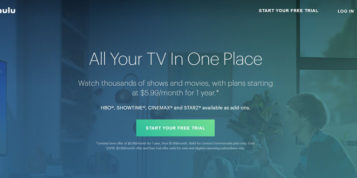Video marketing is ingrained into our consumer culture with countless viral videos being made every day by big brands and propagated on the internet through social media. Some of the most famous examples in the UK of this kind of B2C video marketing include Dove’s campaign for real beauty and Ikea’s recent “BookBook” viral video, which promotes their paper catalogue.
But B2B video marketing has not quite taken off to the same extent with many companies missing out on some pretty powerful marketing opportunities.
A 2014 study published by B2B Marketing and ITN Productions found that despite video being voted as the number one type of content to resonate with a B2B audience, 26% of B2B brands still lacked any guidelines for implementing their video marketing strategy. The tide is definitely beginning to turn though, with video use in B2B marketing look set to explode in the coming months.
Understanding how videos play to each market is the first important step if B2B marketers are going to fully leverage this powerful and increasingly ubiquitous digital medium.

Common Misconceptions
One of the most common misconceptions in the world of video marketing is that using emotion in B2B is a bad idea. In the consumer world, videos use aspirational content, humour and appeals to compassion to sell products and services. In the B2B world, many people still believe that using logic and cold, hard facts is the only way to sell a product.
While it’s true that managers do want to see “the facts”, and that you won’t sell a lot of products with a catchy tune and some sound bites, that doesn’t mean that your marketing efforts should necessarily be stripped of emotional appeal. It is possible to make even the dullest of topics, such as cloud services or CRM software, sound engaging and interesting with a little creativity. Unlike B2C though, B2B marketing will inevitably fall back on statistics and logical appeals, but the initial emotional grab, is still just as important.
One good example of emotion in B2B is the video below created by Taulia to promote payment management solutions. Taulia uses humour, parodying the Direct TV “get rid of cable” commercials and showing a worst-case scenario of the things that can go wrong if you have a bad invoicing and discounting system. The video is memorable, and turns something boring – invoicing – into something that’s actually fun to watch.
A completely different approach can be seen in this video produced by Hurricane Media for leading space technology company Astrium. By appealing to people’s deep held desire to leave a better world for their children the angle here was more emotive. Understanding when to use humour and when to use emotive and moving content is extremely important, if your video isn’t going to fall flat on its face. In this instance the emotive angle is clearly far more effective.
Best Practices
B2B marketers must always be conscious of the impact that their marketing efforts will have on their brand. A poorly received marketing campaign in the consumer world can be a PR disaster, but the market is usually big enough that it is possible to recover, especially if you have a good PR and consumer relations team on your side. B2B companies have a much smaller initial pool of customers, and those customers are likely to have longer memories and even talk to each other.
B2B purchasing decisions are made based on both actual value differentiations and perceptions of value. In many cases, the markets are so competitive that the perception of value differences between leading competitors is either marginal or non-existent. Even if a perceived difference in value exists, only 14% of business owners will pay a premium for the better service, according to a recent study from Google and CEB’s Marketing Leadership Council. You will need to get across a clear message with your video marketing efforts to attract the right kind of customer.
Here are some simple best practices that will make your video marketing more impactful:
- Quality is paramount. Small businesses selling in the B2C market can get away with amateur looking stuff if the content’s good, but in the world of B2B polish and professionalism are everything. It’s imperative you project a capable and confident image that makes it clear your business is on the same level as the businesses that you are dealing with.
- Engage regularly for maximum impact. Use a combination of short-form videos and longer recordings, and give decision-makers a reason to keep coming back to view your content.
- Advocacy marketing is one of the most important forms of video marketing for B2B brands. Using a trusted talking head or a testimonial from a respectable client is perhaps the most effective way to close a deal.
- Have a plan for your video marketing. Define some KPIs and take advantage of video analytics to learn which content people respond to the best. Remember, however, when defining those KPIs that the goal of each video is not always to sell.
Conclusion
When used appropriately, video marketing can be a huge customer-retention tool. In fact, providing your users with high-quality video content can reduce your email opt-outs by up to 75%. Whether you are using video for B2C or B2B, you must remember that your video content is designed not purely to sell, but to help consumers make good decisions. If you are confident in your product, it will shine through in your video, and it will quickly become clear that buying your product is the right decision.
Video marketing is effective, easy to track and offers access to a huge range of customers. Getting started with video marketing can be confusing at first, but it is worth the time investment because high-quality video content offers a good ROI. In the world of B2B, where each new customer acquisition can be worth a lot, it makes sense to do things right first time.





